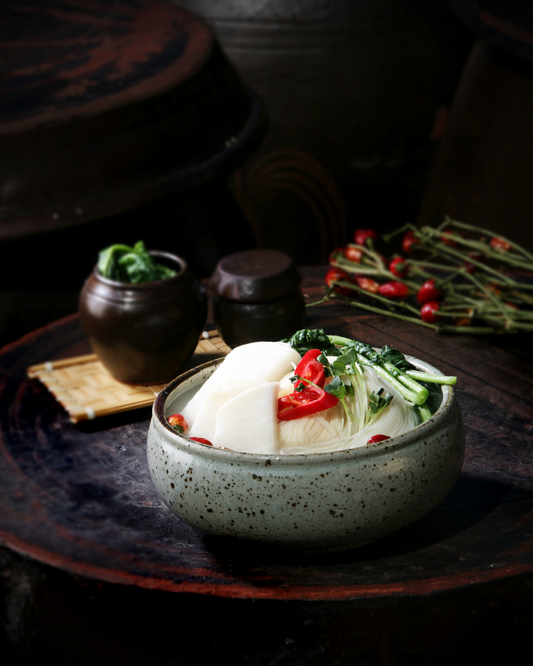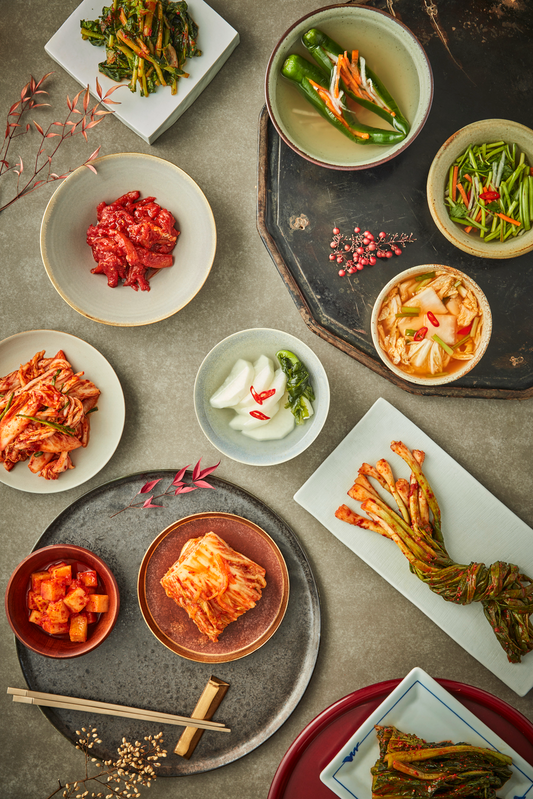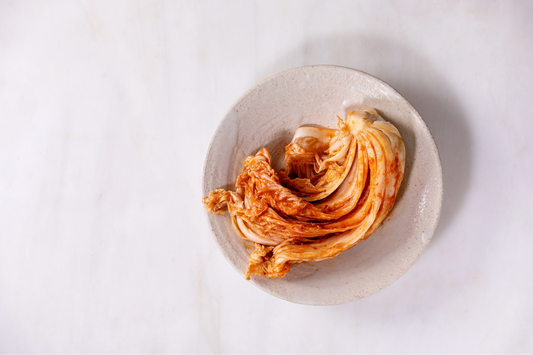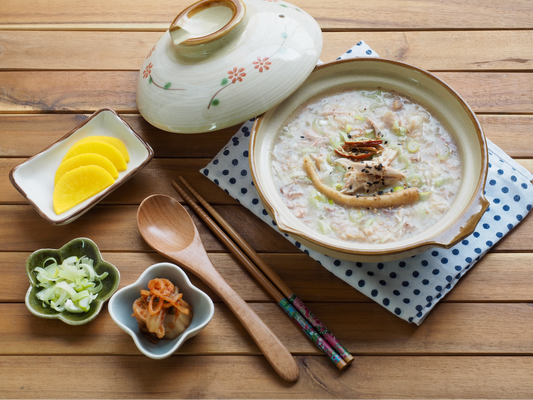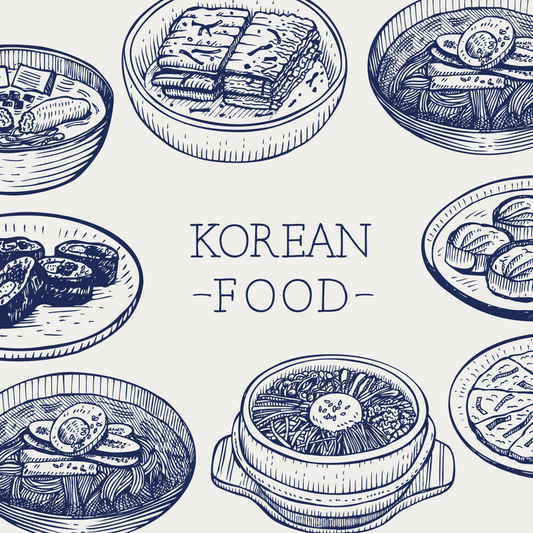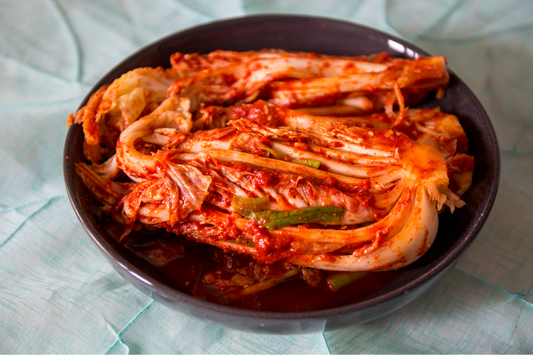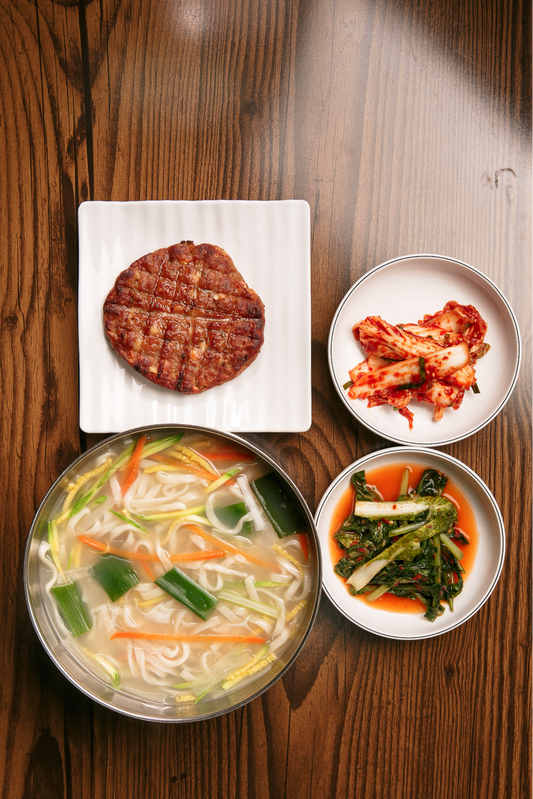Are you searching for a kid-friendly kimchi recipe? Baek kimchi is your answer. It's a mild, non-spicy white kimchi with a refreshing taste. It's great for introducing kids to Korean cuisine.
Baek kimchi is made with napa cabbage, garlic, green onions, and a bit of gochugaru. This gives it a hint of warmth. Unlike fermented kimchi, baek kimchi is sweeter and milder. It's a lighter, more refreshing choice.
In this article, we'll dive into baek kimchi's unique qualities. We'll share a simple recipe your family will enjoy. You'll learn about its health benefits and how to use it in different dishes. Get ready to discover the delightful taste of baek kimchi and make it a new favorite for your kids!
Key Takeaways:
- Baek kimchi is a mild, non-spicy kimchi perfect for kids and those who prefer less pungent flavors.
- This non-fermented kimchi is made with napa cabbage, garlic, green onions, and a touch of gochugaru.
- Baek kimchi offers a delicate sweetness and a refreshing taste compared to traditional fermented kimchi.
- The main ingredients in baek kimchi provide various health benefits, such as aiding digestion and boosting immunity.
- Learn how to make baek kimchi at home with our simple recipe and discover various dishes to pair it with.
Definition of Baek Kimchi
Baek kimchi, also known as white kimchi, is a special type of Korean food. It's not as spicy as other kimchis. This makes it perfect for kids and those who like milder flavors.

Basic Explanation of Baek Kimchi
Baek kimchi is different from the usual red, spicy kimchi. It has a light color and soft flavors. It uses a special brine instead of chili flakes, making it refreshing and less spicy.
This lets the natural tastes of the ingredients come through. You get a mix of savory and sweet flavors.
The Difference Between Baek Kimchi and Other Types of Kimchi
Unlike other kimchis, white kimchi doesn't need fish sauce or flour. This makes it great for vegans, vegetarians, and those on a gluten-free diet. Its flexibility has made it more popular, appealing to many different diets.
The white kimchi is perceived positively by children, with some considering regular spicy kimchi as "bad kimchi" and white kimchi as "good kimchi."
Cultural Background and Unique Features of Baek Kimchi in Korea
In Korea, baek kimchi goes well with char-grilled BBQ meats. Its mild taste is a nice contrast to the rich flavors of grilled foods. It makes meals more enjoyable.
It's also known for its fancy ingredients like pine nuts and chestnuts. These add a special touch to the dish.
The recipe for baek kimchi is simple, and it's good for your stomach. The brine from fermenting it can be used in cold noodle soups. This shows how versatile and creative Korean food can be.

Ingredients and Benefits
Baek kimchi is a type of kimchi that uses Korean radish as its main ingredient. It's a refreshing and mild kimchi that's full of nutrients. Korean radish is high in fiber, which helps with digestion and keeps the gut healthy.
A 1-cup serving of Korean radish kimchi has about 2 grams of fiber. This makes it a great choice for anyone looking to improve their diet.
Nutrient-Dense Ingredients
Baek kimchi also includes carrots, garlic, and onions. Carrots are full of beta-carotene, which is good for the eyes and boosts immunity. Garlic and onions have allicin, which fights inflammation and bacteria.
These ingredients together make a delicious and healthy kimchi. It's packed with vitamins and minerals that are essential for our bodies.
Gentle on the Stomach
Baek kimchi is not fermented, which makes it easy to digest. The fresh vegetables used in it are gentle on the stomach. This makes it perfect for people with sensitive stomachs or those who get indigestion.
It also has a milder flavor than traditional kimchi. This is great for those who find kimchi too spicy or strong.
Added Health Benefits
Some baek kimchi recipes add extra ingredients for more health benefits. For example, apricot jam is sometimes used. It adds sweetness and tanginess, along with antioxidants and vitamins.
The mix of ingredients in baek kimchi makes it a nutritious and tasty side dish. It's good for people of all ages, even kids who might not like spicy foods.

Recipe
Making this easy Korean kimchi recipe at home is simple and rewarding. You just need a few ingredients and some patience. This way, you can make a tasty and healthy side dish that goes well with many meals.
List of Ingredients
To make this easy Korean kimchi recipe, you'll need the following ingredients:
- 2 pounds napa cabbage, cut into bite-sized pieces
- 1/4 cup kosher salt
- 1/2 cup water
- 1/4 cup sweet rice flour
- 1/4 cup granulated sugar
- 1/2 cup gochugaru (Korean red pepper flakes)
- 1/4 cup fish sauce
- 1/4 cup minced garlic
- 1 tablespoon minced ginger
- 1/2 cup chopped scallions
- 1/2 cup julienned carrot or daikon radish
- 1/4 cup pine nuts (optional)
Cooking Process
Once you have gathered all the necessary ingredients, follow these steps to make your own kimchi:
- In a large bowl, mix the napa cabbage with the kosher salt and set aside for 1-2 hours to allow the cabbage to soften and release its liquid.
- Rinse the cabbage thoroughly under cold water and drain well, squeezing out any excess liquid.
- In a small saucepan, whisk together the water, sweet rice flour, and sugar. Heat the mixture over medium heat, stirring constantly, until it thickens and becomes translucent. Allow the mixture to cool.
- In a separate bowl, combine the cooled sweet rice flour mixture, gochugaru, fish sauce, minced garlic, minced ginger, chopped scallions, julienned carrot or daikon radish, and pine nuts (if using).
- Mix the seasoning paste thoroughly with the drained napa cabbage, ensuring that the cabbage is evenly coated.
- Pack the kimchi mixture tightly into a clean, airtight container, pressing down to remove any air pockets.
- Allow the kimchi to ferment at room temperature for 1-2 days, then transfer it to the refrigerator for longer storage.
Storage Method
Kimchi can be stored in an airtight container in the refrigerator for up to 6 months. As it ages, its flavor will get more complex. Make sure to keep it submerged in its liquid to prevent mold and ensure even fermentation. If you see mold or bad smells, throw away the affected kimchi right away.
With this easy Korean kimchi recipe, you can enjoy homemade kimchi whenever you want. It's great on rice bowls, in stews, or as a topping for burgers or tacos. Try different vegetables and adjust the seasoning to make it your own.

Tips and Cooking Methods
Baek kimchi is a versatile Korean side dish that goes well with many meals. Its mild taste is great with noodle soups like knife-cut noodle soup (kalguksu) and oxtail soup (seoleongtang). It also adds a refreshing crunch to grilled meats, perfect for Korean BBQ.
Baek kimchi can be used in many recipes to add freshness and texture. Try it on burgers or nachos, or mix it into fried rice. For a light option, toss it with salad greens and a vinaigrette. It's also good as a condiment for stews or stir-fries.
Customizing Your Baek Kimchi
When making baek kimchi at home, you can make it your own. Vegans can use umami-rich seasoning sauce instead of fish sauce. You can also adjust the spice level or add different vegetables or fruits like apples or pears.
Storing Your Baek Kimchi
Storing baek kimchi properly is important to keep its quality and flavor. Use airtight glass containers to keep the smell out of your fridge. Enjoy your homemade baek kimchi within 1-2 months for the best taste and texture.
FAQ
What is baek kimchi?
Baek kimchi, also known as white kimchi, is a mild, non-spicy kimchi. It's meant to be eaten fresh, without fermentation. It's made with Korean radish, carrots, onions, garlic, green onions, salt, and sometimes sugar.
How is baek kimchi different from traditional kimchi?
Baek kimchi is not fermented like traditional kimchi. It has a milder, slightly sweet flavor. It's less pungent and a refreshing contrast to fermented kimchi.
What are the health benefits of baek kimchi?
Baek kimchi's ingredients are good for you. Korean radishes help with digestion because of their fiber. Carrots are full of beta-carotene, which is good for your eyes and immune system.
Garlic and onions have allicin, which fights inflammation and bacteria. Baek kimchi is also easy on the stomach, helping with indigestion.
How do you make baek kimchi?
To make baek kimchi, you need Korean radish, carrots, onion, garlic, green onions, salt, sugar, sweet rice flour, and water. First, julienne the radish and carrots, and thinly slice the onions and garlic.
Cut the green onions. Mix the vegetables with salt and sugar, letting them soften for 15-20 minutes. Then, boil a flour and water mixture to make a brine.
Pour the brine over the vegetables in a jar. Let it ferment at room temperature for a day before refrigerating.
How long does baek kimchi last in the fridge?
Baek kimchi lasts about a week in the fridge. Store it in airtight glass jars to keep the fridge smell-free.
What dishes pair well with baek kimchi?
Baek kimchi is great with Korean or Asian dishes. It's refreshing with grilled meats or noodle soups. Try it with Korean BBQ, knife-cut noodle soup, hand-torn noodle soup, or oxtail soup.
It's also good as a salad or condiment to balance rich dishes.
Can I make baek kimchi vegan-friendly?
Yes, you can make vegan baek kimchi. Use umami seasoning instead of fish sauce. Adjust the spice by adding more sweetener or less red pepper flakes.

